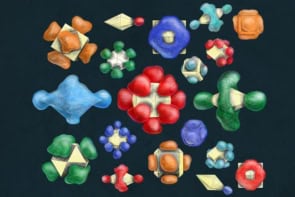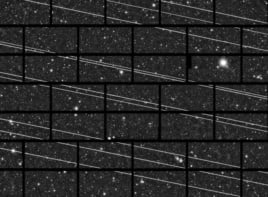As the US eyes a manned mission to an asteroid or Mars, Kirstin Matthews and Padraig Moloney argue that NASA needs better support for basic research – especially nanotechnology – to realize such ambitions

NASA is often linked to its glorious past – especially the Apollo missions to the Moon in the 1960s. But despite the agency’s world-leading achievements in exploring the solar system and building the International Space Station, its recent history has not been so pioneering, with public support for the agency diminishing over the past decade. Backing is crucial for big missions – such as the James Webb Space Telescope – that have the potential to captivate the public and boost support for the agency’s goals.
Such a sorry state of affairs has not been helped by NASA’s declining budget over the past decade. In 2003 cash for the space agency was $19bn (in 2012 dollars), while the proposed budget for 2013 will leave it with just $17.4bn. Cuts to NASA’s science R&D budget have been even more drastic, plummeting from $6.6bn in 2003 to just $1.6bn in 2013 – a decline of more than 75%. With prospects bleak for any federal agency budget increases in the coming years, NASA is now at a turning point. It can either reinvent itself and engage the public in space exploration, or become obsolete.
One way of helping NASA continue to be relevant would be increased funding in new technology R&D linked to a publicly supported and clearly defined mission. In our view, that mission is for NASA to concentrate its efforts beyond the Earth’s orbit. Unfortunately, current technology cannot meet the challenges of deep-space travel to Mars and beyond. So to include humans in such endeavours, NASA needs new advanced-materials technologies – and one area of science that could greatly improve spaceflight and spacecraft with NASA support is nanotechnology.
The nano revolution
Lightweight nanoscale materials, such as carbon nanotubes and graphene, have already proven to be particularly valuable in developing nanoscale circuits, detectors and novel materials thanks to their strength and thermal robustness. They are also important in areas such as radiation shielding and power systems. Research in nanotechnology is also being applied to other areas, including medicine and the development of new power and energy applications.
Since the early 1990s research in nanotechnology at NASA has yielded more than 1000 publications and more than a dozen patents utilizing it. As well as doing research in NASA centres, the agency also gave grants to universities to carry out research in nanotechnology. But despite helping to build the foundation for US advances in nanotechnology, NASA’s efforts have declined in the wake of US President George W Bush’s “vision for space exploration” in 2004. His plan did not come with additional funding, forcing NASA to cannibalize its R&D budget to support nearer-term programmatic needs such as the development of the constellation vehicle. This resulted in major cuts to nanotechnology research.
Unlike other federal agencies in the National Nanotechnology Initiative (NNI) – a programme that co-ordinates nanotechnology research – NASA reduced its contribution to the NNI from $43.8m in 2003 to just $17m in 2011. This resulted in the space agency’s NNI investment in nanotechnology being less than 1% of the $1.8bn spent in 2011 on the field by the federal government. It also led to many of the university-led nanotechnology projects being cut.
Investing in long-term basic and applied R&D must be a key component in NASA’s mission and would help provide more fiscal stability for R&D during changing political climates. To move forward, we believe NASA needs to do three things. First it needs a defined destination in space, such as the Moon or Mars, which will allow the agency to focus its efforts. Second, it needs to give a reasonable deadline – say within a decade – to make such a destination achievable. Third, the agency needs a multi-year budget commitment that can be supported across different administrations.
Keeping ahead
While the above recommendations are largely political, NASA can start to make such changes on its own. For example, it should incentivize idea-sharing and collaboration between its centres as well as with universities. Currently there is often unnecessary and unneeded competition between and sometimes within centres, which creates a poor climate for R&D. In addition, the recent planning process to guide the future of R&D at NASA contained little incentive for scientists to propose specific and realistic plans for multi-year activities. It also failed to demonstrate how NASA can interact best with academic and commercial collaborators. Instead, NASA developed a useful wishlist of potential technologies and advanced materials.
Another problem is that many grants or contracts are re-evaluated yearly, making it difficult to effectively engage academic scientists and engineers, who require longer-term support. These need to be extended to three or five years so that they are in line with other science agencies such as the National Science Foundation.
A failure to make changes, especially in a political climate of flat or reduced funding, poses substantial risk that the US will lose its leadership role in space to other countries – notably China, France, Germany, Israel and Japan – that may make more effective use of their R&D investments. Nanotechnology can revolutionize many areas of science that will be critical to NASA’s future and many of the agency’s pioneers in advanced materials remain ready and willing to continue the advancement of these technologies. NASA needs a bolder plan that includes a destination, a deadline and funding – and the requisite R&D – so that it can recapture its place at the forefront of research.



